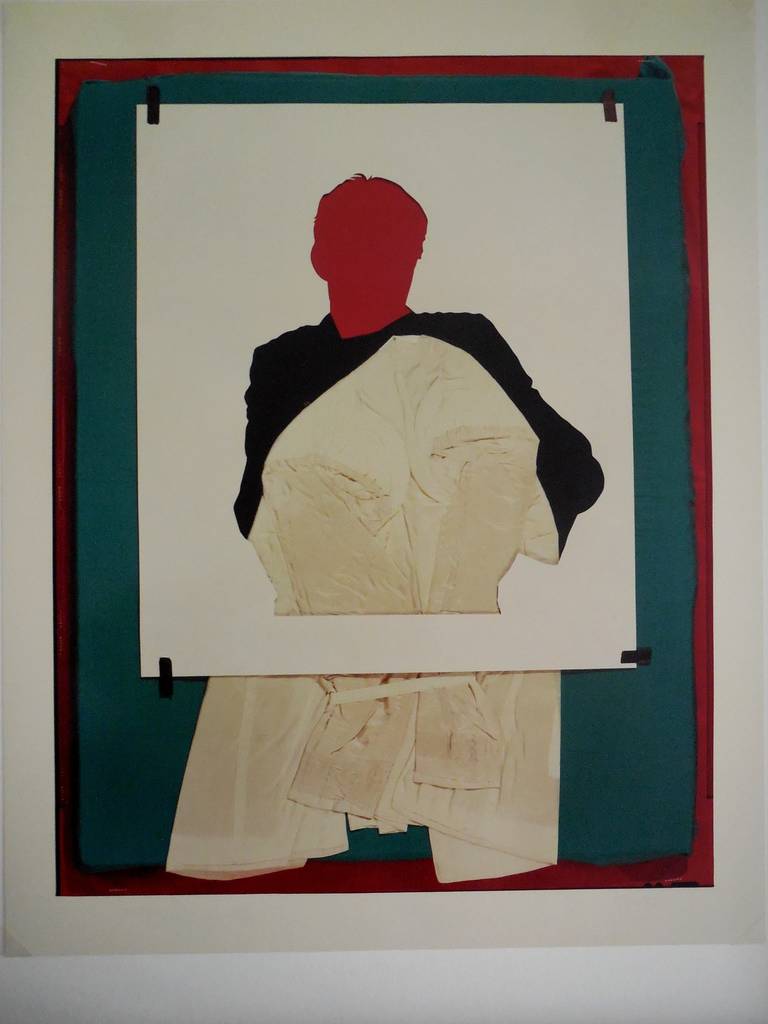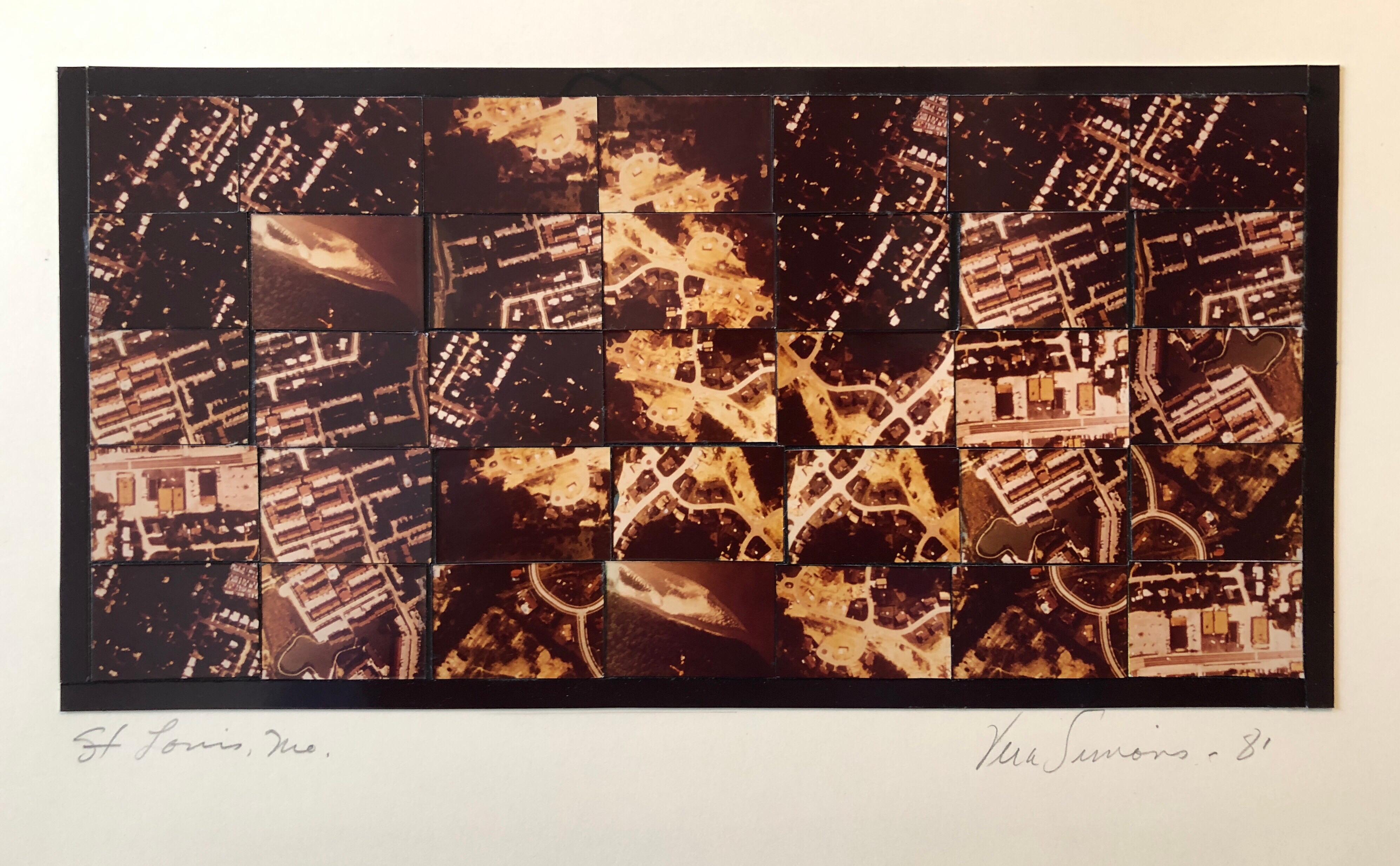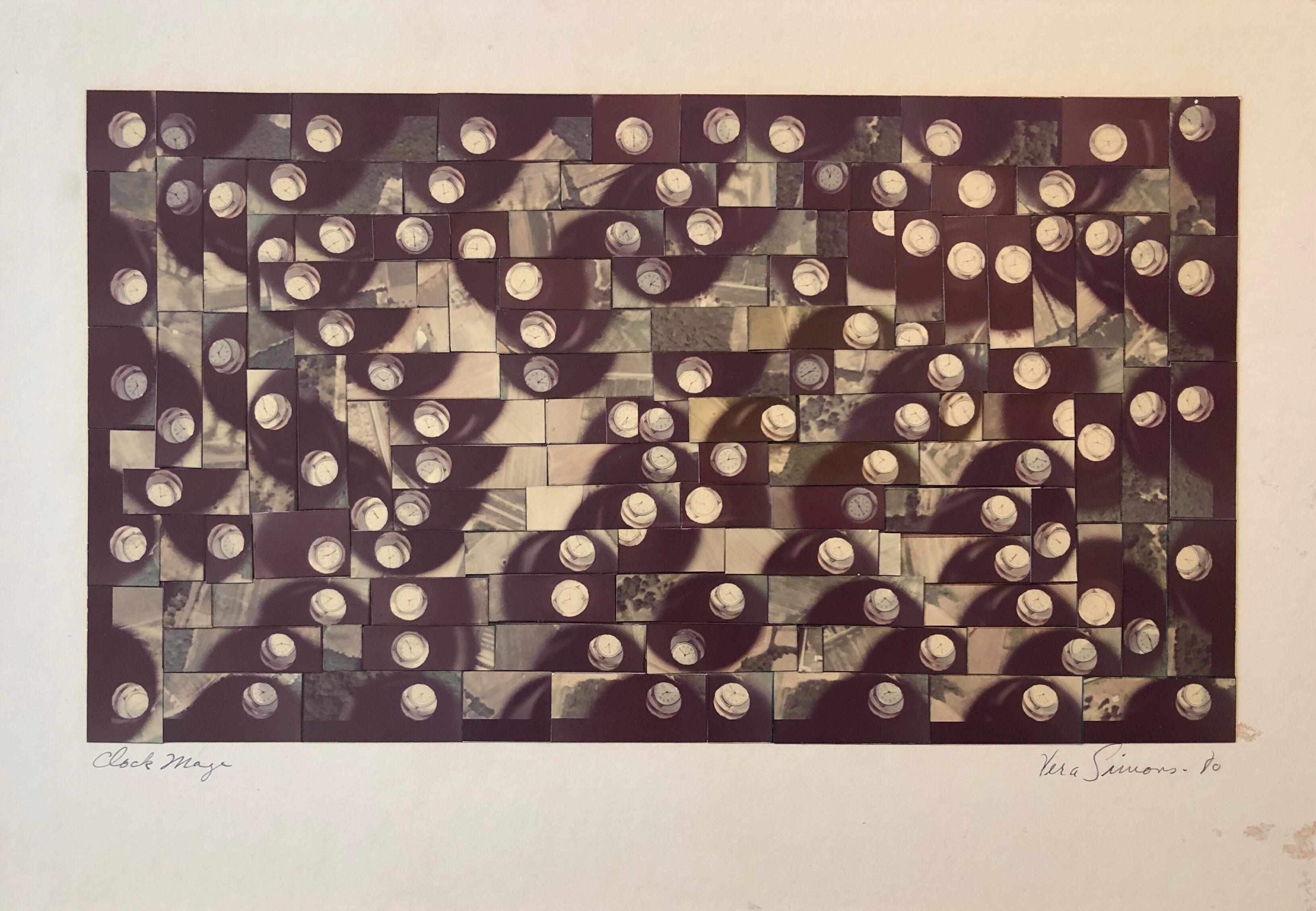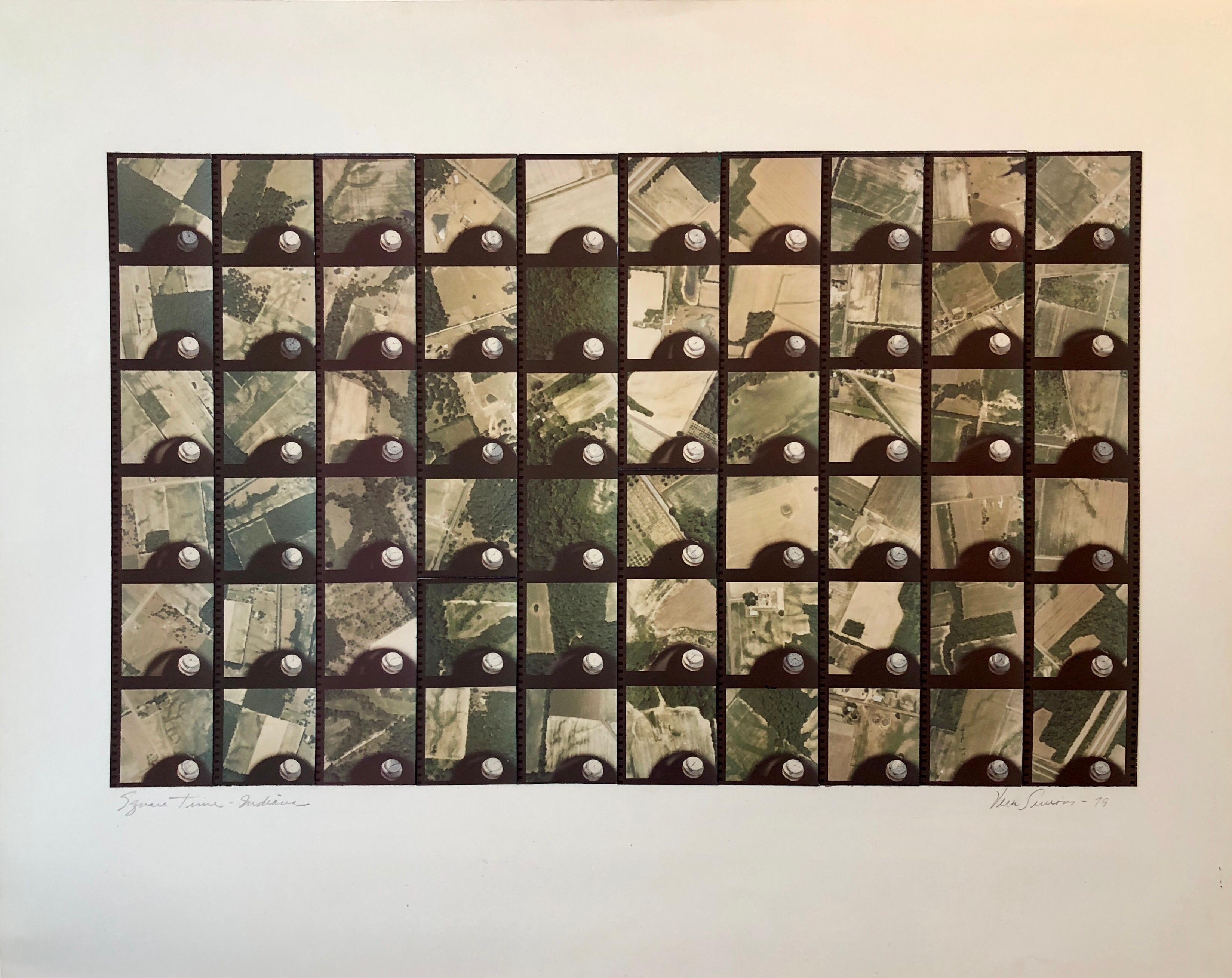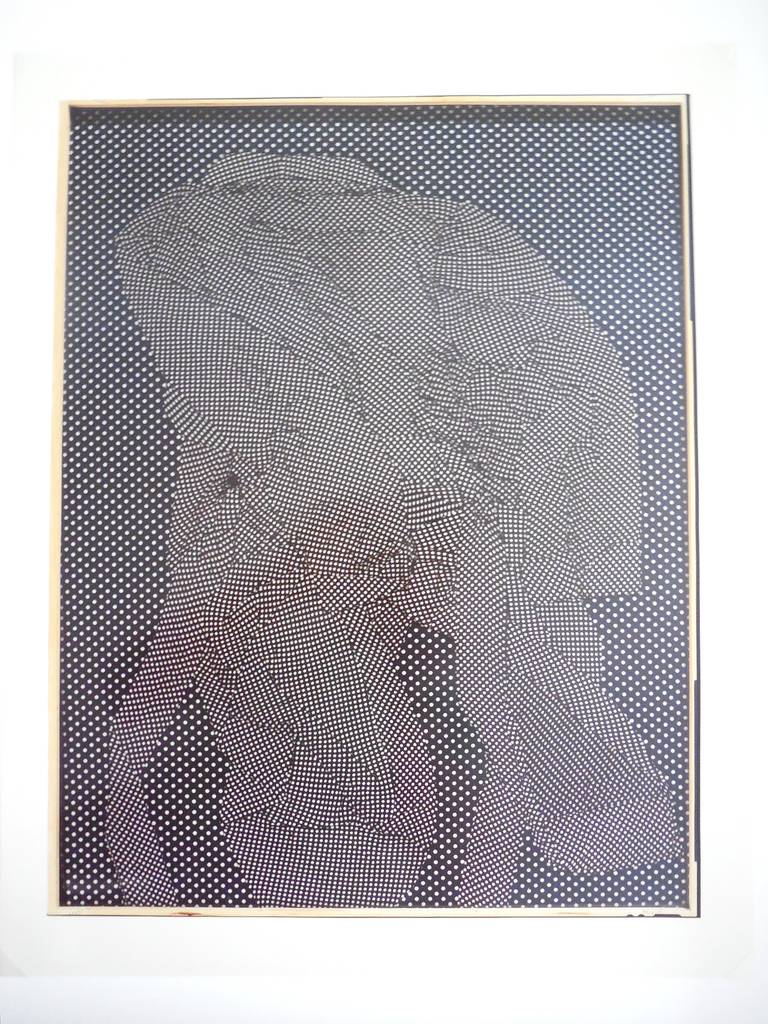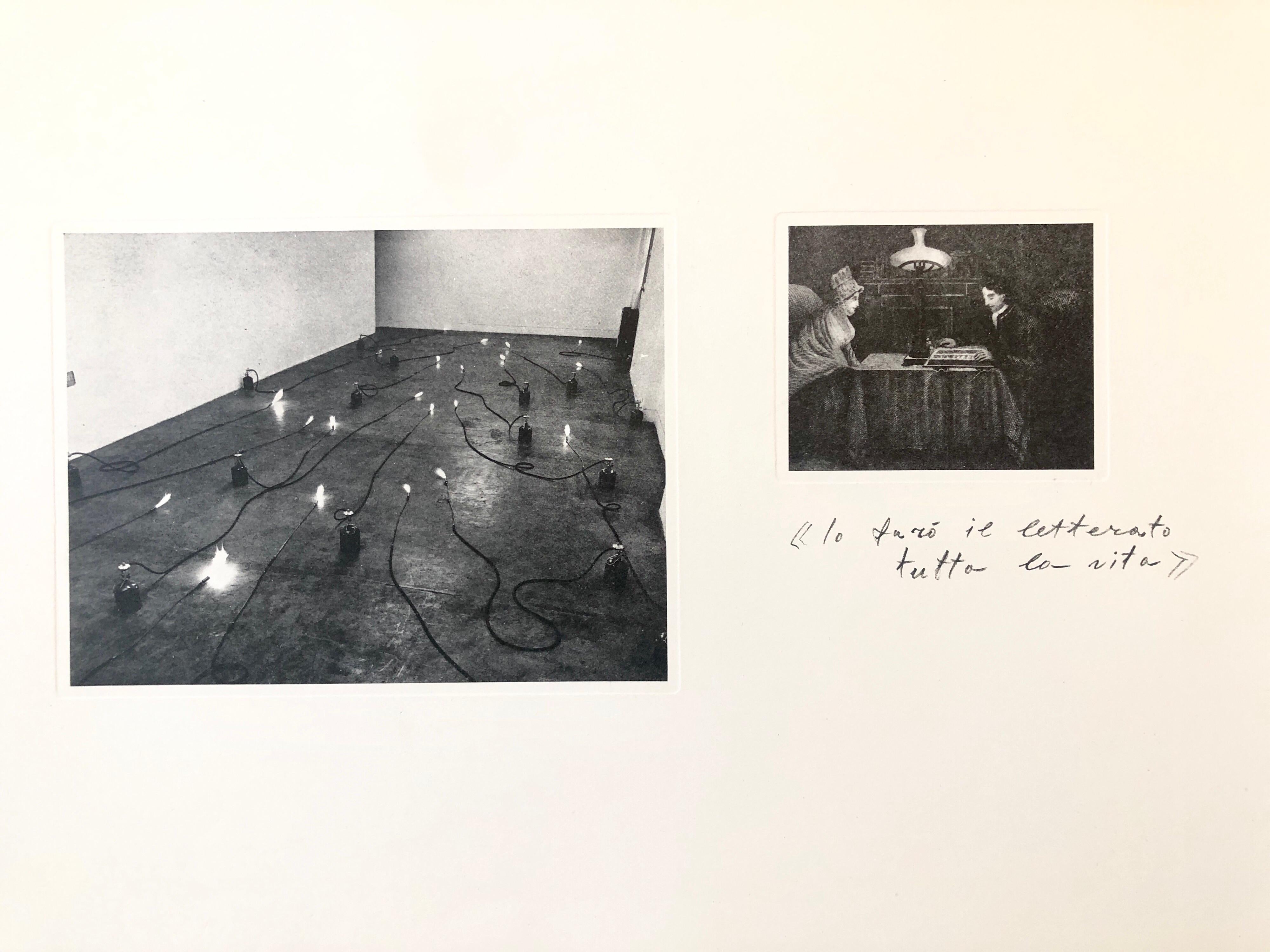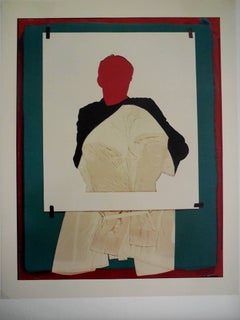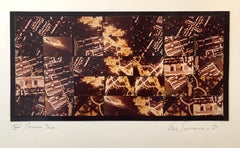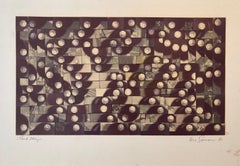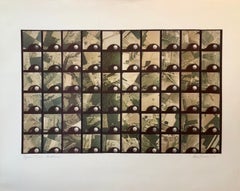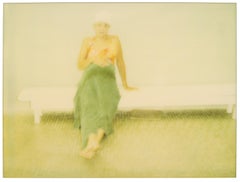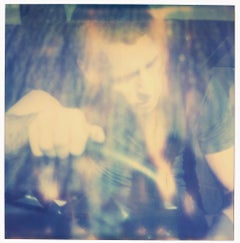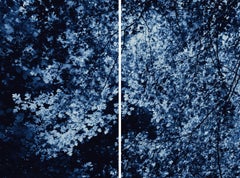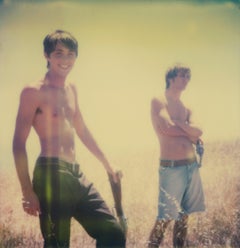Items Similar to Large Harry Bowers Vintage C Print Photograph From Ten Photographs Fashion Photo
Want more images or videos?
Request additional images or videos from the seller
1 of 11
Harry BowersLarge Harry Bowers Vintage C Print Photograph From Ten Photographs Fashion Photo1984
1984
About the Item
HARRY BOWERS
T E N P H O T O G R A P H S
I DON'T LOOK FOR PHOTOGRAPHS I INVENT THEM
I recall my first meeting with Harry Bowers in California a few years ago. As he produced his large-scale prints, I was at first flabbergasted, not only by their size, but by their seamless perfection. Technique appeared to be everything but then technique as technique simply vanished. After the first moment, technique was no longer an issue, but rather a passageway to the imagery.
Suffice it to say about Harry Bowers' working style that he is an obsessive man. Trained as an engineer, he has turned that discipline to art. His lenses, equipment and darkroom, much of it exactingly manufactured by himself to answer certain needs, serve the desire of the artist to take photographic technique to its ultimate perfection in invisibility and transparency. I respect obsession in art, and particularly in photography, because obsession in photography passes beyond the easy, middle ground of image making to a more demanding, more difficult, yet more rewarding end. Bowers' obsession is to eliminate "photography as technique." No grain, no decisive moments, no journalism, or, seemingly, direct autobiographical endeavors appear in his work.
Bowers is an artist of synthesis who controls his environment if only in the studio exactly to his liking. The images he creates are formal structures, saucy stories on occasion, which may offer hints of a darker, more frightening sexuality, but what you see is the end product of an experiment in which nothing save the original insight perhaps is left to chance.
We seem fascinated with the idea of replication of reality in art. Popular painting frequently reproduces a scene "with the accuracy of a photograph," and photographs may "make you feel as though you were right there." The very invisibility of the photographic medium is important to Bowers, in that it allows him to maneuver his subject matter without concern for rendering it in an obvious art medium which would interfere with the nature of the materials he uses. The formal subtleties of Bowers' recent work are as delicious and ambiguous in their interrelationships as the best Cubist collages, yet while those collages always suggest their parts through edge and texture, these photographs present a structure through a surface purity.
Bowers' earlier works, for example, the Skirts I Have Known series, were formed of bits of clothing belonging to Bowers and his wife or found at local thrift shops. These works fused an elegance of pattern and texture, reminiscent of Miriam Shapiro's or Lucas Samaras' fabric paintings, with a sense of theater and, on occasion, high eroticism. These clothes are not simply mashed like baled rags into the glass fronted box which fronts the picture plane, but are actors in a subtle dumb show. Early on, Bowers was surprised that so few people took notice of the erotic element in his work, for it forms a distinct and important component of his images, and one which he has continued to exploit, albeit in different ways.
In the last few years Bowers' work has divided into two parallel modes; one continues his fascination with patterns, textures and stuffs pressed into the transparent picture plane, while the other is more directly anthropomorphic. In this second body of work, Bowers frequently uses articulated shadow figures in black or white, carefully adjusted within the image in a provocative way that is often sexually unsettling. But for all their explicit arrangement, these works may be less suggestive than his earlier clothing tableaus. These newer works are more about space, texture, and the extensions of photography, as well as being a comment on sexuality.
Bowers has always been fascinated with space, and recognizing that it cannot be rendered on a flat surface through the camera, he has set about to create an illusion of space on a shallow plane, a true trompe l'oeil achievement. Within these works, the space is still constructed upon the glass panel of the printing frame, but with elements collaged to its front surface as well as pressed within it. The forms, frequently large black and white photographs (a photographer's conceit on the use of photography), often include a seated or crouching figure dressed only in socks and cutoff dungarees, which add an element of personality. The figure and the way in which it is posed also add a quality of vulnerability to his images, not heretofore seen.
One of the best of these images, HB-28-80, uses a photograph of a figure crouching in a fetal position on a chair. The figure has been cut from its background, and the background, in turn, has been taped to the front of the glass pane while the figure, in perfect register with the background, is laminated behind the glass. One of Bowers' articulated shadow figures, one hand trying to hide its genitals, has been placed on top of the figure, also under the plane of glass. The shadow figure follows the curve of the spine of the photographed figure. One cannot help but feel not only the nakedness and tense embarrassment of these two figures, one real and the other schematic, but the anomalous suggestion of a man carrying a fetus within his body.
Bowers' images extend their power in several ways. They are photographs, which are so pure in their technique as to be clear as water. They deal with precise replications of reality, but a reality which has been recontextualized into episodes of both formal and visceral ambiguity. The best of them are wonderful .. contrivances" -his word-and are as frightening in their psychological implications as they are elegant in their visual form.
Thomas H. Garver, Director Madison Art Center
"I follow fashion. I have closets literally full of clothes. I am a full-blown Comme des Garçons and Prada freak. I love clothes themselves as objects, and I also love the glossies – my love of fashion is how I discovered Wallpaper magazine."
- Creator:Harry Bowers (1938, American)
- Creation Year:1984
- Dimensions:Height: 20 in (50.8 cm)Width: 16 in (40.64 cm)
- Medium:
- Movement & Style:
- Period:
- Condition:
- Gallery Location:Surfside, FL
- Reference Number:1stDibs: LU38210688032
About the Seller
4.9
Platinum Seller
Premium sellers with a 4.7+ rating and 24-hour response times
Established in 1995
1stDibs seller since 2014
1,756 sales on 1stDibs
Typical response time: 1 hour
- ShippingRetrieving quote...Shipping from: Surfside, FL
- Return Policy
Authenticity Guarantee
In the unlikely event there’s an issue with an item’s authenticity, contact us within 1 year for a full refund. DetailsMoney-Back Guarantee
If your item is not as described, is damaged in transit, or does not arrive, contact us within 7 days for a full refund. Details24-Hour Cancellation
You have a 24-hour grace period in which to reconsider your purchase, with no questions asked.Vetted Professional Sellers
Our world-class sellers must adhere to strict standards for service and quality, maintaining the integrity of our listings.Price-Match Guarantee
If you find that a seller listed the same item for a lower price elsewhere, we’ll match it.Trusted Global Delivery
Our best-in-class carrier network provides specialized shipping options worldwide, including custom delivery.More From This Seller
View AllLarge Harry Bowers Vintage C Print Photograph From Ten Photographs Fashion Photo
By Harry Bowers
Located in Surfside, FL
HARRY BOWERS
T E N P H O T O G R A P H S
I DON'T LOOK FOR PHOTOGRAPHS I INVENT THEM
I recall my first meeting with Harry Bowers in California a few years ago. As he produc...
Category
1980s Arte Povera Photography
Materials
Photographic Paper, C Print
St Louis MO Photo Mosaic Collage Aerial Photograph, Female Aviator Feminist Art
By Vera Simons
Located in Surfside, FL
This one depicts an aerial landscape view of Saint Louis Missouri and is titled St. Louis, Mo
SIMONS, Vera (1920 - 2012)
Vera Habrecht Simons, was a German/American aviation pionee...
Category
1980s Arte Povera Color Photography
Materials
Photographic Paper
Clock Maze, Wrist Watch, Photo Mosaic Collage Aerial Photograph, Female Aviator
By Vera Simons
Located in Surfside, FL
This one depicts a sports wristwatch over an aerial landscape and is titled Clock Maze (it should be Watch Maze)
SIMONS, Vera (1920 - 2012)
Vera Habrecht Simons, was a German/Americ...
Category
1970s Arte Povera Color Photography
Materials
Photographic Paper
1979 Square Time Indiana, Photo Mosaic Collage Aerial Photograph, Female Aviator
By Vera Simons
Located in Surfside, FL
SIMONS, Vera (1920 - 2012)
Vera Habrecht Simons, was a German/American aviation pioneer, aeronaut and photo collage artist. She played a very important role in balloon development a...
Category
1970s Arte Povera Color Photography
Materials
Photographic Paper
Large Harry Bowers Vintage C Print Photograph From Ten Photographs Fashion Photo
By Harry Bowers
Located in Surfside, FL
HARRY BOWERS
T E N P H O T O G R A P H S
I DON'T LOOK FOR PHOTOGRAPHS I INVENT THEM
I recall my first meeting with Harry Bowers in California a few years ago. As he produced his large-scale prints, I was at first flabbergasted, not only by their size, but by their seamless perfection. Technique appeared to be everything but then technique as technique simply vanished. After the first moment, technique was no longer an issue, but rather a passageway to the imagery.
Suffice it to say about Harry Bowers' working style that he is an obsessive man. Trained as an engineer, he has turned that discipline to art. His lenses, equipment and darkroom, much of it exactingly manufactured by himself to answer certain needs, serve the desire of the artist to take photographic technique to its ultimate perfection in invisibility and transparency. I respect obsession in art, and particularly in photography, because obsession in photography passes beyond the easy, middle ground of image making to a more demanding, more difficult, yet more rewarding end. Bowers' obsession is to eliminate "photography as technique." No grain, no decisive moments, no journalism, or, seemingly, direct autobiographical endeavors appear in his work.
Bowers is an artist of synthesis who controls his environment if only in the studio exactly to his liking. The images he creates are formal structures, saucy stories on occasion, which may offer hints of a darker, more frightening sexuality, but what you see is the end product of an experiment in which nothing save the original insight perhaps is left to chance.
We seem fascinated with the idea of replication of reality in art. Popular painting frequently reproduces a scene "with the accuracy of a photograph," and photographs may "make you feel as though you were right there." The very invisibility of the photographic medium is important to Bowers, in that it allows him to maneuver his subject matter without concern for rendering it in an obvious art medium which would interfere with the nature of the materials he uses. The formal subtleties of Bowers' recent work are as delicious and ambiguous in their interrelationships as the best Cubist collages, yet while those collages always suggest their parts through edge and texture, these photographs present a structure through a surface purity.
Bowers' earlier works, for example, the Skirts I Have Known series, were formed of bits of clothing belonging to Bowers and his wife or found at local thrift shops. These works fused an elegance of pattern and texture, reminiscent of Miriam Shapiro...
Category
1980s Arte Povera Photography
Materials
Photographic Paper
1970's Large Italian Pop Art Mario Ceroli Arte Povera Sculpture Collage in Wood
By Mario Ceroli
Located in Surfside, FL
Mario Ceroli (Italian, 1938-)
Untitled
c. 1970
Wood collage on paper
Cut wood attached to paper, depicting multiple figures facing each other.
Hand signed and numbered to lower right 'Ceroli prova d'artista'. This work is an artist's proof. (not sure of edition)
Dimensions: Framed 35.5 x 47.5. sheet 27.25 x 39.5
Provenance: Basel Art Fair, 1976 CDS Gallery, New York (bears label verso)
Exhibited: Emilio Cerolli, 1976, Sala Funacion Mendoza, Caracas, Venezuela, An International Scene, 20 September - 20 December 2003, CDS Gallery, New York
Mario Ceroli, born 1938 in Castel Frentano, Province of Chieti, Italy
Mario Ceroli is an Italian sculptor. His work has been exhibited at the Museum of Modern Art in New York City and the Mississippi Museum of Art in Jackson, Mississippi. Ceroli is one of the most influential artists of the Italian post-war period. Ceroli moved to Rome at the age of ten where he later graduated from 'Accademia delle Belle Arti'. At the Art Institute he worked under the guidance of Leoncillo Leonardi, Pericle Fazzini and Ettore Colla, where he experimented with the use of ceramic. In 1958, he first exhibited these works at the Premium Spoleto. In the same year Ceroli held his first solo exhibition at Galleria San Sebastianello of Rome. During 1959 he began to experiment with new materials, particularly with raw wood, such as Russian pinewood. He used these materials to create silhouetted shapes in his furniture and objects that related simplistically to the surrounding space. In the 1960's Ceroli took part in exhibitions related to the "Arte de Povera" group. He had also been involved as screenplay director collaborating with "II Teatro Stabile" in Turin and with "La Scala" In Milan. He was part of the generation of Italian post war artists that included Aligliero Boetti, Lucio Fontana, Alberto Burri, Pino Pascali, Piero Manzoni, Enrico Castellani, Arnaldo Pomodoro, Michelangelo Pistoletto, Mimmo Rotella, Emilio Vedova. One of Ceroli's major works was his 'Mobili nella Valle' series, inspired directly by the Giorgio De Chirico 1927 painting...
Category
1970s Arte Povera Figurative Sculptures
Materials
Wood, Paper
You May Also Like
Transformation (Suburbia) - Contemporary, Polaroid, Photography, Portrait
By Stefanie Schneider
Located in Morongo Valley, CA
Transformation (Suburbia) - 2004
40x48cm,
Edition of 10 plus 2 Artist Proofs.
Archival C-Print based on the Polaroid.
Signature label and Certificate.
Artist Inventory No. 1675....
Category
Early 2000s Contemporary Portrait Photography
Materials
Archival Paper, Photographic Paper, C Print, Color, Polaroid
Runaway Ride (The Getaway) - The Last Picture Show - Polaroid, Contemporary
By Stefanie Schneider
Located in Morongo Valley, CA
Runaway Ride - The Getaway (The Last Picture Show) - 1999
40x40cm,
Edition of 10, plus 2 Artist Proofs.
Archival C-Print, based on the original Polaroid.
Artist Inventory #345.
...
Category
1990s Contemporary Color Photography
Materials
Archival Paper, Photographic Paper, C Print, Color, Polaroid
Dark Forest, Giclée Print Diptych Landscape, Blue Tones Impressionist Leaves
Located in Barcelona, ES
Cyd Fontaine (Lausanne, 1992) is a contemporary artist renowned for her captivating use of dreamy atmospheric gradients, which has helped her carve a distinctive niche in the world o...
Category
2010s Abstract Impressionist Abstract Prints
Materials
Photographic Film, Photographic Paper, C Print, Giclée, Archival Pigment
Renée's Dream - The Boys (Days of Heaven) - Landscape, Horse, Boys
By Stefanie Schneider
Located in Morongo Valley, CA
Renée's Dream - The Boys (Days of Heaven). Part of the 29 Palms, CA project. - 2006,
20x20cm, Edition of 10, plus 2 Artist Proofs,
archival C-Print, based on a Polaroid.
Signature ...
Category
21st Century and Contemporary Contemporary Figurative Photography
Materials
Archival Paper, Photographic Paper, C Print, Color, Polaroid
Jules and Jim (Renée's Dream) - Contemporary, 21st Century, Polaroid, Figurative
By Stefanie Schneider
Located in Morongo Valley, CA
Jules and Jim (Renée's Dream), - 2007, from the 29 Palms, CA series,
40x39cm,
Edition 3/10,
Analog C-Print, hand-printed by the artist, based on the Polaroid,
Certificate and sig...
Category
Early 2000s Contemporary Color Photography
Materials
Archival Paper, Photographic Paper, C Print, Color, Polaroid
Palm Springs Palm Trees X (Californication)
By Stefanie Schneider
Located in Morongo Valley, CA
Palm Springs Palm Trees X (Californication) - 2019
78x76cm, Edition of 10, plus 2 Artist Proofs.
digital C-Print, based on a Polaroid.
Certificate and Signature label.
Artist Inv...
Category
2010s Contemporary Color Photography
Materials
Archival Paper, Photographic Paper, C Print, Color, Polaroid
Recently Viewed
View AllMore Ways To Browse
Large Vintage Photo
Harry S
Large Cut Glass Box
California Vintage Clothing
Vintage Illusion Dress
Vintage Invisible Set
Erotic Dress
Comme Des Garcons Black Skirt
Prada Shows
Framed Wallpaper Panel
S L Fashions Vintage Dress
White 80s Chairs
Prada Set
Stuff Box
Extensions Dress
Prada High Top
1989 Prada
Garcon Painting
